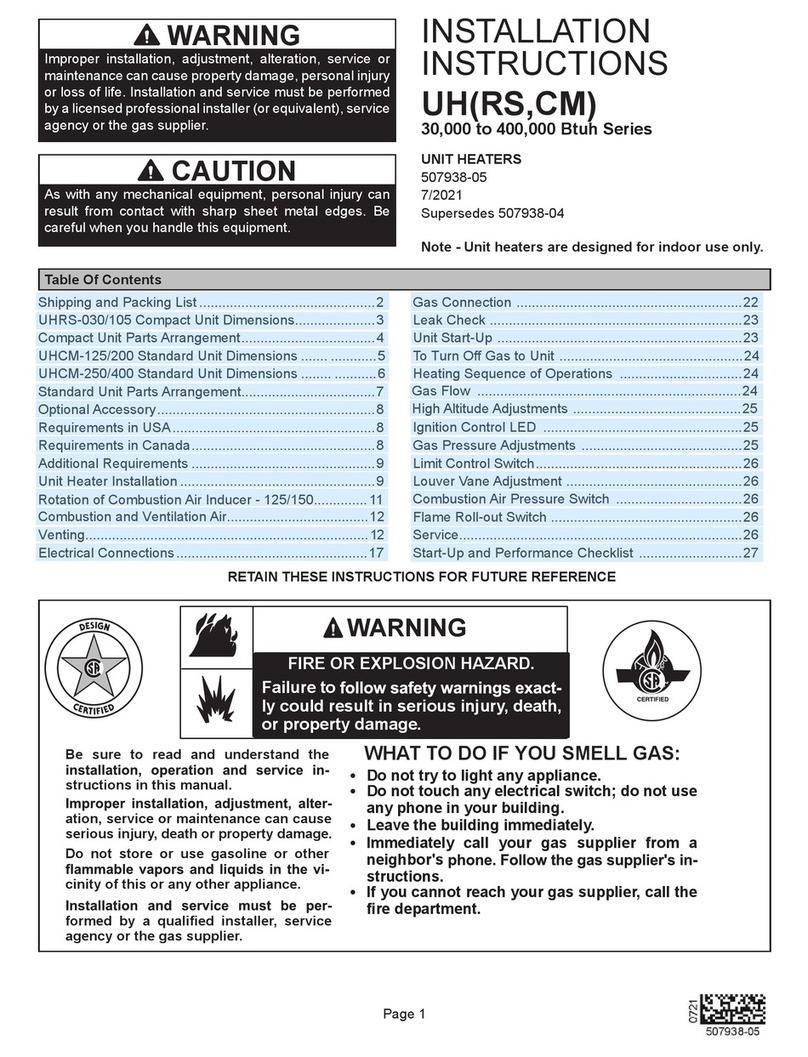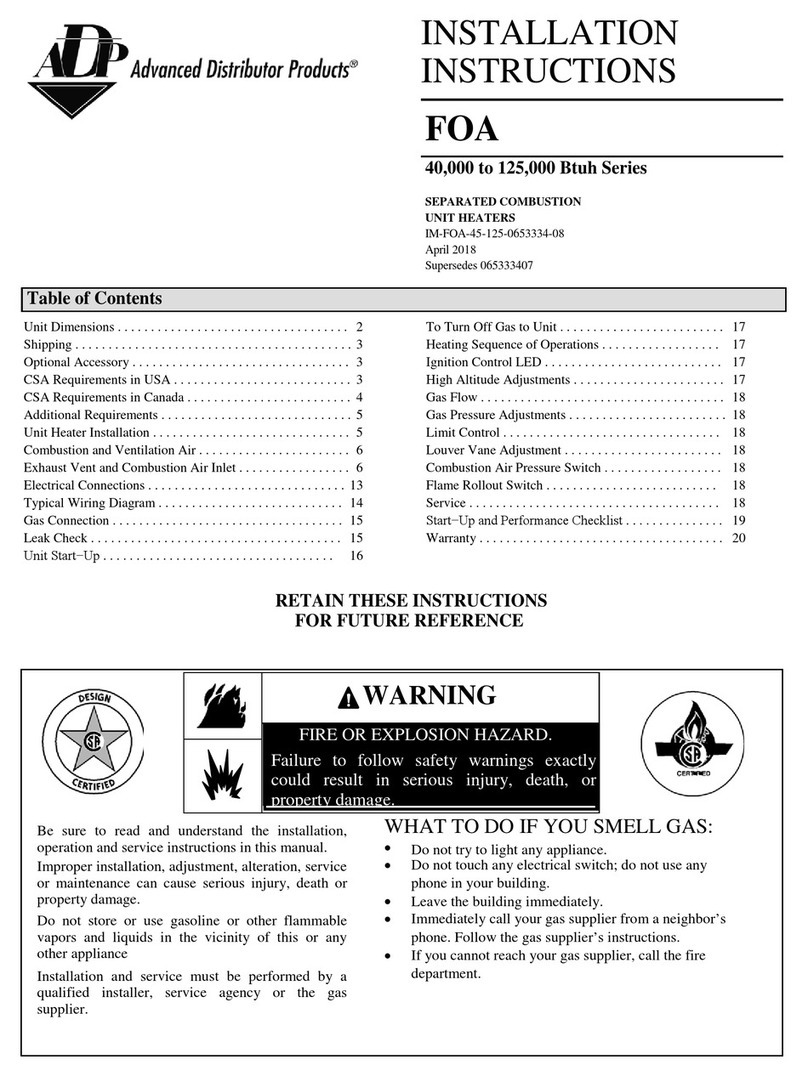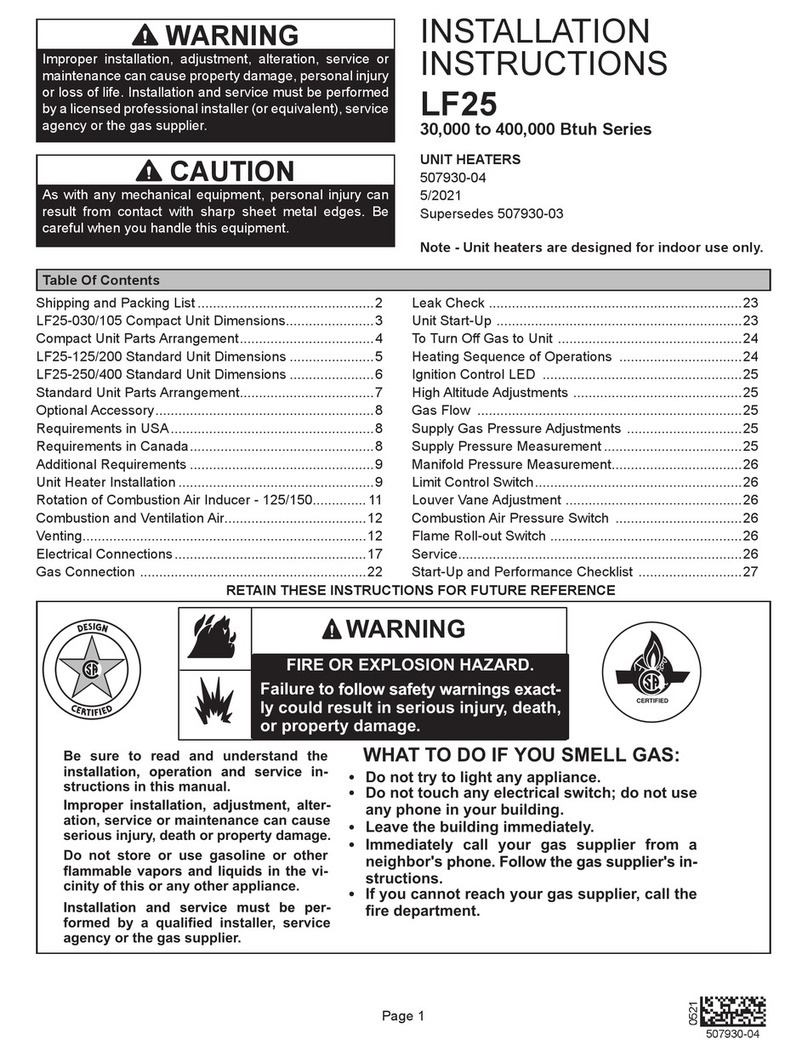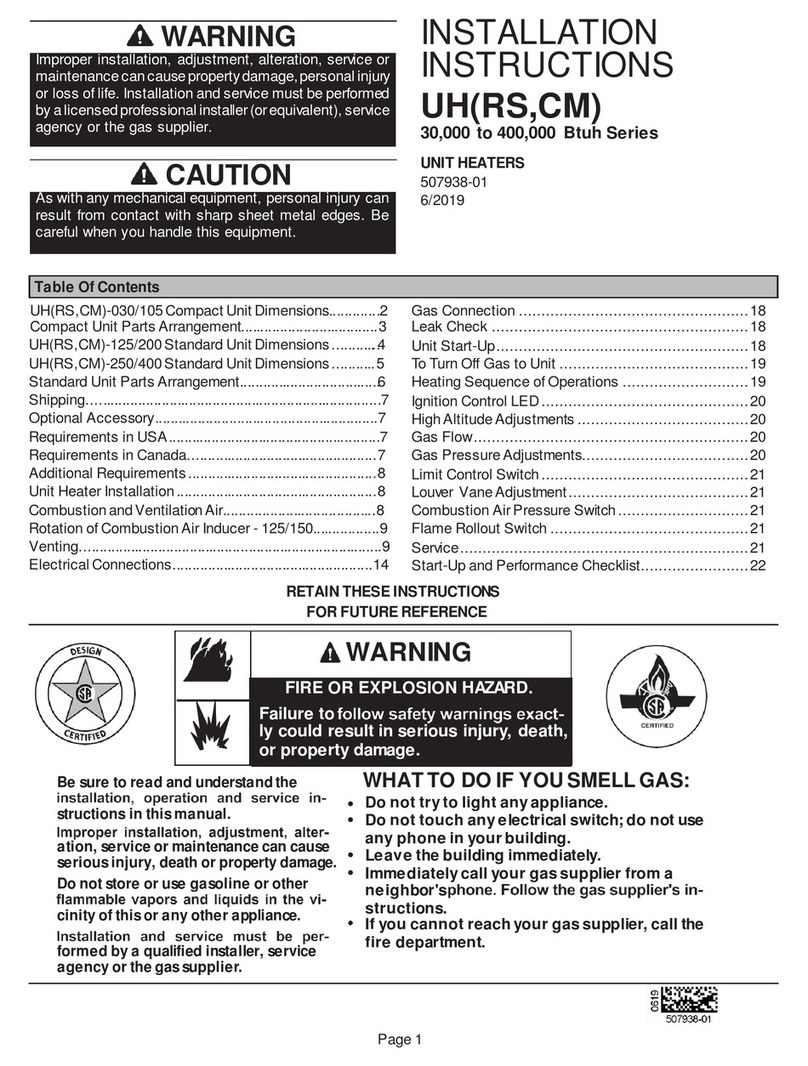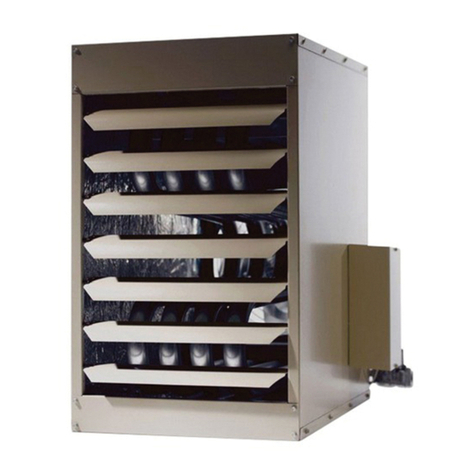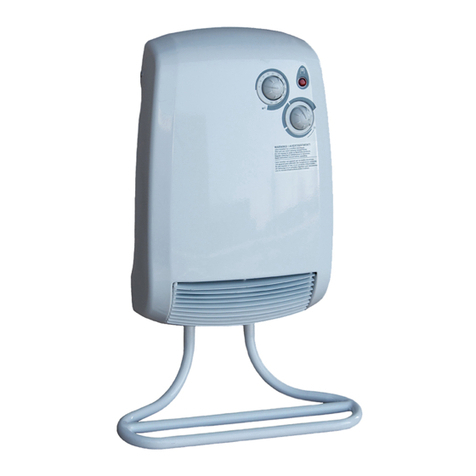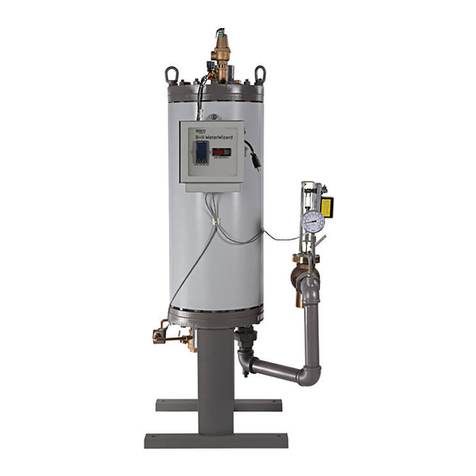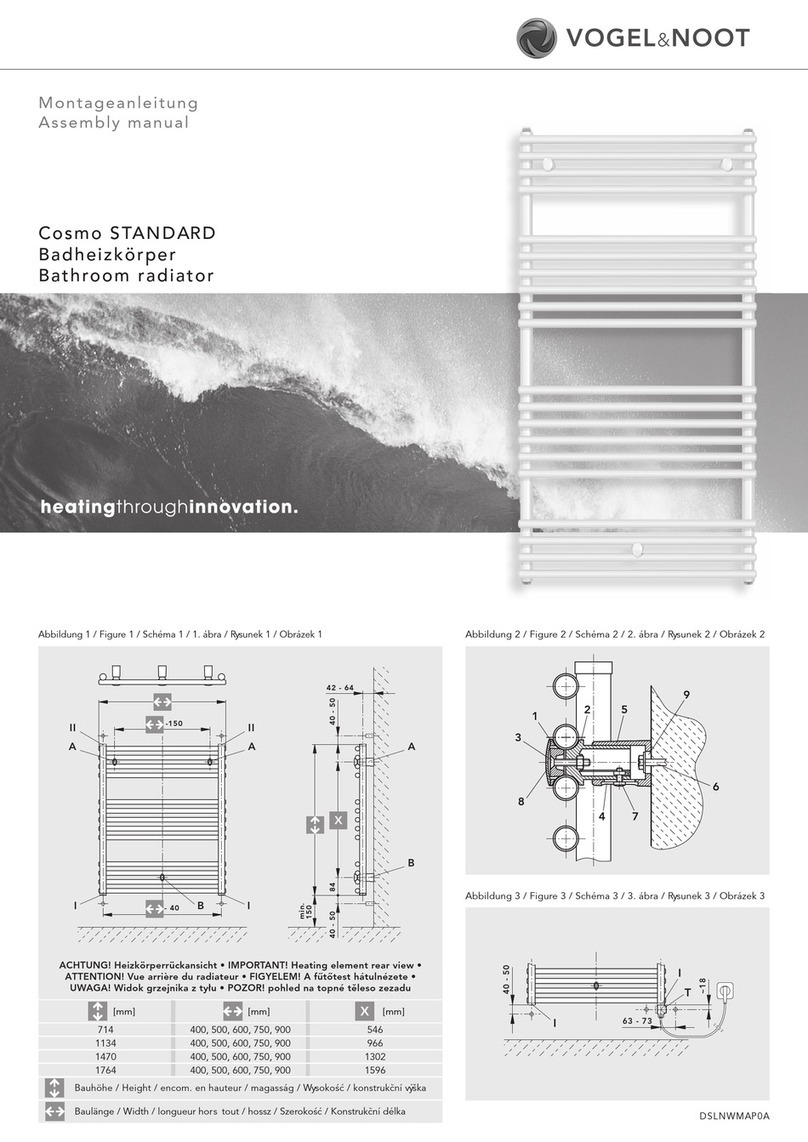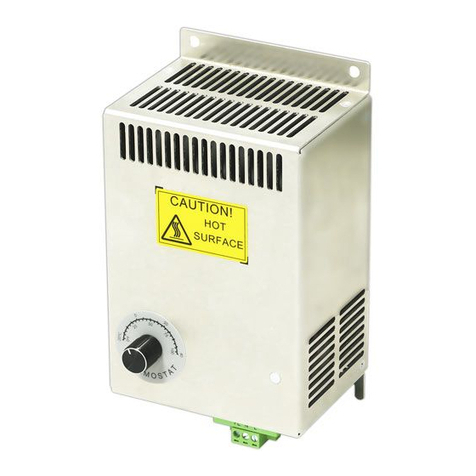Adp HED Series User manual

INSTALLATION
INSTRUCTIONS
HED
75,000 to 300,000 Btuh Series
DUCT HEATERS
IM-HED-0652455-08
October 2017
Supersedes IM-HED-0652455-07
Table of Contents
HED Unit Dimensions . . . . . . . . . . . . . . . . . . . . . . . . . . . . 2
Shipping . . . . . . . . . . . . . . . . . . . . . . . . . . . . . . . . . . . . . . 3
Optional Accessories . . . . . . . . . . . . . . . . . . . . . . . . . . . . 3
CSA Requirements in USA . . . . . . . . . . . . . . . . . . . . . . . . 4
CSA Requirements in Canada . . . . . . . . . . . . . . . . . . . . . 4
Additional Requirements . . . . . . . . . . . . . . . . . . . . . . . . . 4
Unit Heater Installation . . . . . . . . . . . . . . . . . . . . . . . . . . . 4
Combustion and Ventilation Air . . . . . . . . . . . . . . . . . . 5
Rotation of Combustion Air Inducer . . . . . . . . . . . . . . . . . 6
Venting . . . . . . . . . . . . . . . . . . . . . . . . . . . . . . . . . . . . . . . 6
Electrical Connections . . . . . . . . . . . . . . . . . . . . . . . . . . . 10
Typical HED Wiring Diagram . . . . . . . . . . . . . . . . . . . . . . 10
Gas Connection . . . . . . . . . . . . . . . . . . . . . . . . . . . . . . . . . . . 11
Leak Check . . . . . . . . . . . . . . . . . . . . . . . . . . . . . . . . . . . . . . . 11
Unit Start−Up . . . . . . . . . . . . . . . . . . . . . . . . . . . . . . . . . . . . . 11
To Turn Off Gas to Unit . . . . . . . . . . . . . . . . . . . . . . . . . . . . . 13
Heating Sequence of Operation . . . . . . . . . . . . . . . . . . . . . . . 13
Ignition Control LED . . . . . . . . . . . . . . . . . . . . . . . . . . . . . . . . 13
High Altitude Adjustment . . . . . . . . . . . . . . . . . . . . . . . . . . . . 13
Gas Flow . . . . . . . . . . . . . . . . . . . . . . . . . . . . . . . . . . . . . . . . 14
Gas Pressure Adjustment . . . . . . . . . . . . . . . . . . . . . . . . . . . 14
Limit Control Switch . . . . . . . . . . . . . . . . . . . . . . . . . . . . . . . . 14
Combustion Air Pressure Switch . . . . . . . . . . . . . . . . . . . . . . 14
Service . . . . . . . . . . . . . . . . . . . . . . . . . . . . . . . . . . . . . . . . . . 14
Start−Up and Performance Checklist . . . . . . . . . . . . . . . . . . 16
Template . . . . . . . . . . . . . . . . . . . . . . . . . . . . . . . . . . . . . . . . 17
Warranty . . . . . . . . . . . . . . . . . . . . . . . . . . . . . . . . . . . . . . . . 18
RETAIN THESE INSTRUCTIONS
FOR FUTURE REFERENCE
WARNING
FIRE OR EXPLOSION HAZARD.
Failure to follow safety warnings exact-ly
could result in serious injury, death, or
property damage.
Be sure to read and understand the
installation, operation and service
instructions in this manual.
Improper installation, adjustment, alter-
ation, service or maintenance can cause
serious injury, death or property damage.
Do not store or use gasoline or other
flammable vapors and liquids in the vicinity
of this or any other appliance.
Installation and service must be per-formed
by a qualified installer, service agency or
the gas supplier.
WHAT TO DO IF YOU SMELL GAS:
• Do not try to light any appliance.
• Do not touch any electrical switch; do not use
any phone in your building.
• Leave the building immediately.
• Immediately call your gas supplier from a
neighbor’s phone. Follow the gas supplier’s
instructions.
• If you cannot reach your gas supplier, call the fire
department.

HED Unit Dimensions
Model No.
A
B
C
D
E
F
G
H
J
K
L
M
in.
26
28-1/4
19-1/2
8-1/2
18-1/2
11-3/4
2-1/2
21−1/8
17−3/8
13−3/8
15
7−5/16
HED−75(A)(S)
mm
660
718
495
216
469
298
64
537
441
340
381
186
HED-100(A)(S),
in.
31-5/16
32-3/16
20-3/16
11-1/2
19-1/16
11-3/4
3-1/4
25
18−1/8
15−3/8
15−5/8
9−5/16
HED-125(A)(S)
mm
795
817
513
267
484
298
83
635
460
391
397
237
in.
31-5/16
32-3/16
23-1/8
11-3/8
23-1/16
8−1/2
3-1/4
25
21−1/8
15−3/8
17−1/8
8−15/16
HED−150(A)(S)
mm
795
817
587
289
586
216
83
635
537
391
435
227
HED-200(A)(S),
in.
31-5/16
32-3/16
41-1/8
3-11/16
40
17-1/2
3-1/4
25
39−1/8
15−3/8
35−1/16
9
HED-250(A)(S),
mm
795
817
1045
97
1016
445
83
635
994
391
891
229
HED-300(A)(S)
A−Heat Exchanger Aluminum Steel S−Heat Exchanger Stainless Steel
Shipping
The heater is completely assembled and is shipped with installation and operating instructions, warranty certificate
and flue transition. Check the unit for shipping damage. The receiving party should contact the last carrier
immediately if any shipping damage is found.
* NOTE: Two rivet nuts are
furnished on HED models 75, 100,
125 and 150.
Four rivet nuts are furnished on HED
models 200, 250 and 300
Additional 3/8-16 rivet nuts for unit
suspension (furnished on HED
models 200, 250 and 300.
2

CSA Requirements in USA
Installation of gas duct heaters must conform with local
building codes or, in the absence of local codes, with the
current edition of ANSI−Z223.1, National Fuel Gas Code.
Installation in aircraft hangers must be in accordance
with the current edition of ANSI/NFPA No. 409,
Standard for Aircraft Hangers.
Installation in parking structures must be in accordance
with the current edition of ANSI/NFPA No. 88A,
Standard for Parking Structures.
Installation in repair garages must be in accordance with
the current edition of ANSI/NFPA No. 88B, Standard for
Repair Garages.
Authorities having jurisdiction should be consulted
before installation. Air for combustion and ventilation
must conform to the methods outlined in the current
edition of ANSI Z223.1, Section 5.3, Air for Combustion
and Ventilation, or applicable provisions of local
building codes.
The National Fuel Gas Code (ANSI-Z223.1) is
available from:
American National Standard Institute Inc.
11 West 42nd Street
New York, NY 10036
building codes or, in the absence of local codes, with
the current edition of CSA-B149 installation compliance
codes. All electrical wiring and grounding for the unit
must also comply with the current edition of CSA
C22.1, Canadian Electrical Code.
These duct heaters are CSA-certified for clearances to
combustible material listed on the rating plate and table 3.
Adequate clearance must be provided around the
appliance and around air openings into the combustion
chamber. Provision must be made for service
accessibility.
NOTE − Fire protection clearances may be exceeded
to provide additional space for service and accessibility.
GARAGE / WAREHOUSE INSTALLATIONS
1 − In a storage area, clearance from the heater to
combustible materials must be such that the
combustible material must not attain a
temperature above 160°F (71°C) during
continuous operation of the unit.
WARNING
These units are CSA international design−certified. These
duct heaters are certified for clearances to combustible
material as listed in table 1 and on unit rating plate.
Accessibility and service clearances must be observed
in addition to fire protection clearances.
All electrical wiring and grounding for unit must be in
accordance with the regulations of the current edition of
ANSI/NFPA No. 70, National Electric Code.
The National Electric Code is available from:
National Fire Protection Association
1 Batterymarch Park
PO Box 9101
Quincy, MA 02269−9101
CSA Requirements in Canada
These instructions are intended only as a general guide
and do not supersede local codes in any way. Authorities
having jurisdiction should be consulted before installation.
The installation must conform with local
2 − Maintain an 8−foot (2.5 m) minimum clearance
from the floor to the bottom of the heater. Refer to
the current edition of CSA-B149 installation
compliance codes.
AIRCRAFT HANGER
1 − In an area where aircraft are housed or serviced,
a 10-foot (3m) minimum clearance from the
highest surface of the aircraft to bottom of the
heater must be maintained.
2 − In other areas, an 8-foot (2.5m) minimum
clearance from the floor to bottom of heater must
be maintained.
TABLE 1
UNIT CLEARANCES TO COMBUSTIBLE MATERIALS
Top
Sides
Bottom
Rear
Flue
Model
in
mm
in
mm
in
mm
in
mm
in
mm
HED−75
1
25
6
152
0
0
18
457
6
152
HED−100
6
152
6
152
0
0
18
457
6
152
through −300
Combustible materials that are affected by
exposure to temperatures less than 160°F
(plastics, plastic wrap, styrofoam, cardboard,
etc.) must be stored well away from this
heater. Discharge air temperatures for these
units can approach 200°F.
3

As with any mechanical equipment, personal injury
can result from contact with sharp sheet metal
edges. Be careful when you handle this equipment.
CAUTION
3 − Heaters should be located so that they are
protected from damage from aircraft or other
appliances needed for servicing of aircraft. Refer
to requirements of the enforcing authorities.
In a confined area, the heater must be installed in
accordance with the current edition of CSA-B149
installation compliance codes. Be sure to check with
local codes and ordinances for additional requirements.
Additional Requirements
The Commonwealth of Massachusetts stipulates the
following additional requirements:
1 − Gas furnaces shall be installed by a licensed
plumber or gas fitter only.
2 − The gas cock must be T handle" type.
Duct Heater Installation
Connect the return air and supply air ducts to unit. The
unit must be installed on the positive pressure side of the
circulating air blower. The CFM through the unit must be
adjusted within the range listed on the unit rating plate.
The air flow pattern must be reasonable and even.
Failure to comply with these adjustments may void
the warranty. The connecting duct to the unit shall
have removable access panels on both upstream and
downstream sides of the duct heater. These openings
shall be accessible when the furnace is installed in
service and shall be of such size that smoke or
reflected light may be observed inside the casing to
indicate the presence of leaks in the heat exchanger.
The cover for the openings shall be attached in such a
manner as to prevent leaks.
A duct furnace shall be installed with an inlet duct
which will provide air distribution equivalent to a
straight run of duct having the same cross-sectional
area as the inlet connection and not less than 2
equivalent diameters in length. See figure 1.
SINGLE BLOWER APPLICATION
(Top View)
155
TRANSITION
HED UNIT
BLOWER
AIR FLOW
DUCT
LENGTH “L"
The formula for computing duct length L" is:
4WH
W = WidthH = Height (Inlet)
W + H
Duct length L" is computed as shown by the formula, and
rounded to the nearest whole number.
MODEL
INLET DUCT −− in. (mm)
DUCT
NO.
WIDTH
HEIGHT
LENGTH “L"
HED−75
15
13−3/8
29
(381)
(340)
(737)
HED−100, −125
15−5/8
15−3/8
31
(397)
(391)
(788)
HED−150
17−1/8
15−3/8
33
(435)
(391)
(839)
HED−200,−25O,
35−1/16
15−3/8
43
−300
(891)
(391)
(1093)
FIGURE 1
NOTE − The appliance may be installed downstream
from refrigerated units supplying air below the dew
point of the ambient air surrounding the appliance. A
¼” barbed connection under the burner box is provided
for condensate drainage.
The duct connection from the blower to the unit must be
a smooth transition. Any side of the transition shall not
taper more than 15°. Where elbows or turns are used,
proper air distribution can be obtained by the use of
properly designed air turns.
NOTE − Do not install heater in explosive or flammable
atmosphere, laden with grain dust, sawdust, or similar
airborn materials. Do not install heater where direct
contact with water may occur.
Install the unit in the desired location as governed by
clearances, vent connection, air direction, gas supply,
electrical supply and service accessibility.
Improper installation, adjustment, alteration, service
or maintenance can cause property damage,
personal injury or loss of life. Installation and
service must be performed by a licensed
professional installer (or equivalent), service agency
or the gas supplier.
IMPORTANT
In these conditions, condensate will form in the duct
heater. A condensate drain connection is provided
on the duct heater for condensate removal. Installer
must make adequate provisions to route
condensate from this drain connection. The
condensate drain should be checked periodically
and cleaned as required.
CAUTION
4

On HED models 75, 100, 125 and 150, mounting nuts
are furnished at the balance point (two positions only).
On HED models 200, 250 and 300, mounting nuts are
furnished at each corner of the unit. Mounting nuts will
accommodate 3/8" x 16 threaded rods.
1 − Cut threaded rods to desired length and slide a
3/8" nut onto the rod.
2 − Slide a flat washer onto the threaded rod AFTER
the nut (7/16" inside diameter X 1" outside
diameter X 1/16" thick washer).
3 − Screw the rods (two or four) into the mounting
nuts on the unit.
4 − Tighten nuts to secure unit to rods.
Combustion and Ventilation Air
Adequate facilities for supplying air for combustion and
ventilation must be provided in accordance with the
current edition of ANSI Z223.1, section 5.3, and
CSA−B149 installation compliance codes, or applicable
provisions of local building codes.
All gas-fired appliances require air to be used for the
combustion process. In many buildings today, there is a
negative indoor air pressure caused by exhaust fans, etc.
If sufficient quantities of combustion air are not
available, the heater or another appliance will operate
in an inefficient manner, resulting in incomplete
combustion which can result in the production of
excessive carbon monoxide.
If indoor air is to be used for combustion, it must be
free of the following substances or the life of the heat
exchanger will be adversely affected: chlorine, carbon
tetrachloride, cleaning solvent, halogen refrigerants,
acids, cements and glues, printing inks, fluorides, paint
removers, varnishes, or any other corrosives.
Rotation of Combustion Air Inducer
(HED−75, −100, −125 and −150 Only)
The combustion air inducer on HED models −75, −100,
−125 and −150 may be rotated 90° either to the left or
right of the original vertical position in order to better
suit the application.
NOTE − It is not permissible to rotate the combustion
air inducer on HED models −200, −250 and −300.
Rotate the combustion air inducer assembly as follows:
1 − Remove the heater from the carton. Decide the best
duct heater orientation. The vent can be installed in
one of three discharge positions: up, left, or right.
2 − If the inducer is to be rotated, follow the
instructions in this section; otherwise, refer to
instructions under Venting" section.
3 − Before making an electrical or gas connections,
remove the securing screws on the flue
box/combustion air inducer. See figure 2.
FLUE BOX AND
COMBUSTION AIR INDUCER ASSEMBLY
FLUE BOX GASKET
FLUE BOX
VEST PANEL
COMBUSTION AIR INDUCER GASKET
COMBUSTION AIR INDUCER
FIGURE 2
4 − Remove the flue box/combustion air inducer
assembly, ensuring that the gasket is not
damaged. If the gasket is damaged, replace it.
5 − Use a 1/4" socket to remove the three screws which
secure the combustion air inducer to the flue box.
Remove the inducer and gasket from the flue box
ensuring that the gasket is not damaged. If the
gasket is damaged, replace it.
6 − Use the template provided in the back of this
manual to mark new hole locations. Use a 7/32"
drill bit to drill holes in flue box.
7 − Place the gasket between the combustion air
inducer and the flue box. Rotate both the inducer
and the gasket 90° to the desired position.
Reinsert and tighten the three inducer securing
screws (#8−16 X 1/2" HWHSMS).
8 − Place the gasket between the flue box and the vest
panel. Position the flue box/combustion air inducer
assembly on the vest panel. Fasten the flue box to
the vest panel using the flue box securing screws
(#10−16 X 5/8" HWHSMS) and a 5/16" driver.
9 − The duct heater is now ready for installation as
described in the Venting section.
Do not use the gas manifold pipe to lift unit. Any
excessive upward or downward force on the
manifold pipe and bracket assembly can cause the
ignition burner and igniter to become misaligned.
IMPORTANT
Insufficient combustion air can cause headaches,
nausea, dizziness, asphyxiation or death.
CAUTION
5

Venting
NOTE − The vent is a passageway, vertical or nearly
so, used to convey flue gases from an appliance, or its
vent connector, to the outside atmosphere. The vent
connector is the pipe or duct that connects a fuel-gas
burning appliance to a vent or chimney.
NOTE − Local codes may supersede any of these
provisions.
GENERAL RECOMMENDATION AND
REQUIREMENTS
HED duct heaters must be vented in compliance with the
latest edition of the National Fuel Gas Code (NFPA 54 /
ANSI Z223.1) in the USA and with CSA−B149.1 codes in
Canada, as well as applicable provisions of local
building codes, and the following instructions.
A sheet metal flue transition is supplied with this
certified unit. It must not be modified or altered and
must be installed on the outlet of the combustion
air inducer assembly prior to the installation of the
vent connector. Failure to comply with this
requirement will void the certification of the unit by
the approval agencies.
A single-wall vent connector may be used in all
applications between the furnace and the vertical vent
pipe.
UL−approved Category III venting materials must
be used in all horizontal vent piping applications.
A single−wall vent pipe used as a vent connector or as a
vertical vent must have all seams and joints sealed with
pressure−sensitive aluminum tape or silicone rubber
sealant. Aluminum tape must meet the provisions of
SMACNA AFTS-100-73 Standards. The aluminum tape
must have a temperature rating of 400°F (204°C).
Silicone rubber sealant must have a temperature rating of
482°F (250°C), i.e., Dow Corning RTV−736 or equivalent.
All joints must be secured with at least two corrosion
resistant screws. All joints must be checked for gas
tightness after installation. Single-wall vent pipe used
as vertical vent must not pass through any attic, interior
wall, concealed space, or floor.
VERTICAL VENTS USING METAL VENT PIPE
All HED duct heaters are listed as Category 1
appliances for vertical vent installations.
1 − All HED duct heaters are to be used with NFPA− or
ANSI− approved chimneys or U.L.−listed type B−1
gas vents where applicable, as well as the
modifications and limitations listed in figure 2. Seal
single−wall vent material according to General
Recommendations and Requirements section.
2 − Keep the vent connector runs as short as possible
with a minimum number of elbows. Refer to the
current edition of ANSI Z223.1 or CSA-B149
installation compliance codes for maximum vent
and vent connector lengths. Horizontal run of the
vent connector from the combustion air inducer
outlet to the chimney/vent pipe cannot exceed the
values in table 3.
A single 3" (76 mm), 4" (102mm), or 5" (127 mm)
elbow is equivalent to 5 feet (1.53 m) of vent pipe.
A single 6" (152mm) elbow is equivalent to 9 feet
(2.75 m) of vent pipe.
Single−wall vent connector shall not be insulated.
TABLE 2
VENT CONNECTOR DIAMETERS
Model Number
Connector Diameter
HED−100
HED−115 4" (102mm)
HED−145
HED−175
HED−200
HED−230 5" (127mm)
HED−250
HED−300
3 − All HED models may be vented vertically as a single
appliance, or as a common vent with other gas−fired
appliances. In a common venting situation, vent
connectors for other appliances must be joined to
the vent at least 4" (102 mm) above the connected
HED connection. When common venting with
another HED unit, maintain at least a 4" (102 mm)
vertical separation between the vent connectors.
4 − Clearance to combustible material is 6" (152mm)
for single−wall vent material except where a listed
clearance thimble is used. Clearance to
combustible material for type B-1 vent or
factory−built chimney is per manufacturer’s
instructions.
5 − The vent connector must be supported with hangers
no more than three feet (1m) apart to prevent
movement after installation. All horizontal vent
connector runs must have a slope up to the vertical
vent of at least 1/4" per foot (1mm per 50mm).
6 − All vertical vents must be terminated with a listed
vent cap or rain shield assembly unless local
codes permit otherwise.
6

VENT TERMINATION ON SINGLE−WALL VERTICAL VENT RUNS
SINGLE−WALL VENT PIPE WITH
SINGLE−WALL VENT PIPE WITH
SINGLE−WALL TERMINATION
DOUBLE−WALL (TYPE B−1) TERMINATION
ROOF FLASHING
ROOF PITCHED
FROM 0" TO 45"
ROOF FLASHING
ROOF PITCHED
FROM 0" TO 45"
12" MAX
2” CLEARANCE
THIMBLE
SEAL JOINT BETWEEN SINGLE−WALL VENT AND B" VENT TERMINATION
AND THE OPEN SPACE BETWEEN THE SINGLE WALL VENT PIPE AND
THE OUTER PIPE OF THE B" VENT TERMINATION.
CLEARANCE TO BE
AS SPECIFIED ON
TYPE B" VENT PIPE.
FIGURE 3
7 − The vent pipe must extend at least 3 feet (1m)
above the highest point where it passes through a
roof of a building. The vent must also extend at
least two feet higher than any part of a building
within a horizontal distance of 10 feet (3.05 m)
unless otherwise specified by the ANSI Z223.1 or
CSA−B149 installation compliance codes. The
vent must extend at least 5 feet (1.53 m) above
the highest connected equipment flue collar.
TABLE 3
MAXIMUM HORIZONTAL VENT CONNECTOR AND
HORIZONTAL VENT PIPE LENGTHS
HED−75 through
HED−200 through
No. of
−150
−300
Elbows
ft
m
ft
m
1
25
7.6
35
10.7
2
20
6.1
30
9.1
3
15
4.6
25
7.6
4
10
3.0
20
6.1
5
5
1.5
15
4.6
6
−−
−−
10
3.0
7
−−
−−
5
1.5
8− When the length of a single-wall vent, including
elbows, exceeds the length shown in table 4, the
vent shall be insulated along its entire length with a
minimum of 1/2" thick foil faced fiberglass 1–1/2#
density insulation.
TABLE 4
MAXIMUM LENGTH UNINSULATED VENT CONNECTOR
HORIZONTAL VENTING
NOTE − Common venting is not allowed when
horizontally venting the duct heater.
If the HED duct heater is to be horizontally vented, a
positive pressure may be created in the vent. The duct
heater, when installed with horizontal venting, will
perform as a category III appliance.
1 − Special vent materials approved for use with
Category III appliances may be used with these
units. Refer to table 7 for venting components.
2 − If possible, do not terminate the horizontal vent
through a wall that is exposed to prevailing wind.
Exposure to excessive winds can affect unit
performance. If such a termination is necessary,
use a wind block to protect the vent termination
from direct winds.
3 − Vent termination must be free from obstructions
and at least 12" (30.5 cm) above grade level and
maximum snow height.
4 − Do not terminate vent directly below roof eaves or
above a public walkway, or any other area where
condensate dripping may be troublesome and
may cause some staining. Avoid windows where
steam may cause fogging or ice buildup.
5 − Minimum clearance for horizontal vent termination
from any door, window, gravity air inlet, gas or
electric meter, regulators, and relief equipment is
4 feet (1m) for United States installations.
In Canada, horizontal vent termination must have
a minimum 6-foot horizontal clearance from gas
and electric meters and relief devices.
(INCLUDING ELBOWS)
Model
ft
m
HED−75
15
4.57
HED−100 THROUGH 300
N/A*
N/A*
*Not applicable for larger units. Maximum length of uninsulated vent
is equal to maximum allowable vent length from table 2.
Refer to latest editions of the ANSI Z223.1 or
CSA−B149 for installation compliance codes and
with local authorities with jurisdiction.
6 − Vent termination must be a minimum of 4 feet
(1.2m) horizontally from any soffit or under-eave
vent.
7

7 − Vent termination must be a minimum of 6 feet (1.83
m) from an inside corner formed by two exterior
walls. If possible, leave a 10−foot clearance.
8 − Vent termination must be a minimum of 10 feet
(3m) from any forced air inlet (includes fresh air
inlet for other appliances, such as a dryer).
9 − For upward sloped vent, a condensate tee and drain
must be installed within the first 5 feet (2m) from the
duct heater to protect the appliance. If the unit is
shut down for an extended period of time and will be
exposed to sub-freezing temperatures, the
condensate may freeze.
10 − For upward sloped vent, see figure 3, condensate
tee and drain must be installed within the first 5 feet
(1.53 m) from the duct heater to protect the
appliance.
11 − Flexible loop trap in condensate line (if used)
must be filled with water to prevent combustion
products from entering structure.
12 − Select a wall termination point that will maintain
1/4" rise per foot slope of horizontal run of vent
pipe. In areas where authorities having jurisdiction
permit, a downward slope of maximum 1/4" per
foot is also acceptable. Condensate drainage can
be collected in a tee pipe section (figure 4) with
drain loop similar to one used for upward slope
vent, or allowed to drip through the vent
termination, if permitted by authorities (Fig 5).
13 For horizontal venting, the vent pipe must be
supported with hangers no more than 3 feet (1m)
apart to prevent movement after installation.
14 − All horizontal vent applications which use Category
III vent pipe must terminate with an approved
Category III tee. Opening end must face downward.
15 − When termination is routed through an exterior
combustible wall the vent must be supported
using a listed clearance thimble. Inside edge of
vent termination tee or elbow must be at least 12"
(305mm) from outside wall.
COMBUSTION AIR INDUCER CAN
BE ROTATED ON UNITS HED−75,
−100, −125 and −150 ONLY.
NOTE − FOR HED−200,
−230, −250 and 300 −− DO
NOT ROTATE THE
COMBUSTION AIR
INDUCER; USE 90° ELBOW.
NOTE − Minimum horizontal length
equals 5 feet (1.53 m).This does
not include termination tee. Refer to
table 3 for maximum length and
number of elbows.
HORIZONTAL VENTING
Venting may be single−wall (26
UPWARD SLOPE
GSG) galvanized or equivalent
stainless steel vent pipe sealed per
these instructions, OR listed special
vent for Category III appliances.
SLOPE = 1/4 IN. PER FOOT RUN
COMBUSTION
CATEGORY III
MAXIMUM.
AIR INDUCER
ADAPTER
12 INCHES MIN.
(Make airtight using
high−temperature
(30.5 CM)
sealant provided in kit)
VENT TERMINATION
TEE
LISTED WALL
THIMBLE THROUGH
12" (30.5CM)
COMBUSTIBLE WALL
MINIMUM ABOVE
HIGHEST
SNOWFALL
DRAIN LOOP WITH
WATER TRAP TO
CONDENSATE TRAP
(Provided by installer)
GROUND LEVEL
FIGURE 4
8

CONDENSATE DRAIN THROUGH TEE PIPE AND DRAIN LOOP
Venting may be single−wall (26
GSG) galvanized or equivalent
stainless steel vent pipe sealed
per these instructions, OR
listed special vent for Category
III appliances.
SLOPE = 1/4 IN. PER
FOOT RUN MAXIMUM.
NOTE − Minimum horizontal
length equals 5 feet (1.53 m).
This does not include termination
tee. Refer to table 6 for maximum
length and number of elbows.
DOWNWARD SLOPE ON HORIZONTAL VENT
TEE PIPE
SECTION
DRAIN LOOP WITH
WATER TRAP TO
CONDENSATE TRAP
(Provided by installer)
12 INCHES
(30.5 cm)
MINIMUM
VENT TERMINATION
TEE OR 90° ELBOW
FIGURE 5
CONDENSATE DRAIN THROUGH VENT TERMINATION
DOWNWARD SLOPE ON HORIZONTAL VENT
Venting may be single−wall (26
GSG) galvanized or equivalent
stainless steel vent pipe sealed
per these instructions, OR
listed special vent for Category
III appliances.
SLOPE = 1/4 IN. PER
FOOT RUN MAXIMUM.
NOTE − Minimum horizontal
length equals 5 feet (1.53 m).
This does not include termination
tee. Refer to table 6 for maximum
length and number of elbows.
12 INCHES
(30.5 cm)
MINIMUM
DOUBLE
MALE
VENT TERMINATION
ADAPTER
TEE
(Cat III kits
only)
FIGURE 6
TABLE 5
Category III Horizontal Venting Components
(Required for Horizontal Vent Applications)
Unit
Part Number
Description
66808902
4" upward sloped Cat III vent kit
HED−75
66809002
4" downward sloped Cat III vent kit
HED−100
66809102
4" 90° elbow Cat III (required)
HED−125
66809301
4" straight pipe (length = 6")
HED−150
66809302
4" straight pipe (length = 12")
66809303
4" straight pipe (length = 36")
66808903
5" upward sloped Cat III vent kit
HED−200
66809003
5" downward sloped Cat III vent kit
66809103
5" 90° elbow Cat III (required)
HED−250
66809401
5" straight pipe (length = 6")
HED−300
66809402
5" straight pipe (length = 12")
66809403
5" straight pipe (length = 36")
9

Electrical Connections
NOTE − Local codes may supersede any of the
provisions outlined in this instruction.
The HED series duct heaters use a direct spark ignition
system. There is no pilot necessary as the spark lights the
main burner as the gas valve is turned on. The direct
spark ignition control board emits radio noise as the
sparking process is under way. The level of energy may
be sufficient to disturb a logic circuit in a microprocessor-
controlled thermostat. It is recommended that an isolation
relay be used when connecting the HED series duct
heaters to a microprocessor-controlled thermostat. Install
the thermostat according to instructions provided by the
manufacturer. Install a separate fused disconnect switch,
with the fuse sized according to blower motor size.
Connect wiring through knockout on the junction box
located on the side of the duct heater. Refer to heater
wiring diagram for connection information. Use 18
gauge wire or larger for thermostat connections.
NOTE − Electrically ground unit in accordance with local
codes or, in the absence of local codes, in accordance
with the current National Electrical Code (ANSI/NFPA No.
70) in the U.S.A., and in Canada with the current
Canadian Electrical Code, Part 1 (CSA C22.1).
NOTE − Uninsulated ground wires must be wrapped in
electrical tape to avoid damage to the electrical system.
Connect field wiring as shown on wiring diagram on
unit. Also refer to typical diagram in this manual. An
additional thermostat wire must be run to terminal G" on
heater when continuous blower is desired.
TYPICAL HED WIRING SCHEMATIC
TYPICAL HED WIRING SCHEMATIC
10

Gas Connection
When connecting gas supply, the length of the run from
the meter must be considered in determining the pipe
size to avoid excessive pressure drop. A line pressure
of 7" w.c. (178 mm w.c.) for natural gas should be
maintained when sizing piping. For correct sizing of
piping, consult the utility having jurisdiction.
A drip leg should be installed in the vertical pipe run to
the unit. In some localities, codes may require that a
manual main shutoff valve and union (furnished by
installer) be installed external to the unit. Union must
be of the ground joint type. See figure 7.
A 1/8" NPT plugged tap must be installed immediately
upstream of the gas supply connection to the heater.
NOTE − Compounds used on threaded joints of gas
piping must be resistant to the actions of liquefied
petroleum gases.
GAS SUPPLY CONNECTION
MANUAL
MAIN SHUT−OFF VALVE
(Furnished by Installer)
GROUND
JOINT UNION
1/8 NPT
PLUGGED
GAS FLOW
TAP
DRIP LEG
FIGURE 7
Leak Check
After gas piping is completed, carefully check all piping
connections, (field and factory), for gas leaks. Use a
soap solution or other preferred means.
The appliance must be isolated from the gas supply
piping system by closing its individual manual gas
shutoff valve during any pressure testing of the gas
supply system at test pressures equal to or less than
1/2 psig (3.45kPa).
NOTE − In case emergency shutdown is required, shut
down main gas valve and disconnect main power to unit.
These devices should be properly labeled by the installer.
GAS SUPPLY TO UNIT HEATER
MANUAL MAIN SHUT−OFF
DISCONNECT GAS
VALVE WILL NOT HOLD
NORMAL TEST
VALVE WHEN TEST
PRESSURES OF 1/2 psig
PRESSURES OF
1/2 psig (3.45kPa)
(3.45kPa) OR HIGHER
OR HIGHER WILL
BE USED.
CAP
UNIT HEATER
FIGURE 8
Unit Start−Up
FOR YOUR SAFETY READ BEFORE LIGHTING
WARNING
Electric shock hazard. Can cause injury
or death. Do not use this appliance if any
part has been under water. Immedi-ately
call a qualified service technician to
inspect the furnace and to replace any
part of the control system and any gas
control which has been under wa-ter.
WARNING
Danger of explosion. Can cause injury or
product or property damage. If
overheating occurs or if gas supply fails
to shut off, shut off the manual gas valve
to the appliance before shutting off
electrical supply
The heater and its individual shut off valve must be
disconnected from the gas supply piping system
during any pressure testing of that system at test
pressures in excess of 1/2 psig (3.45kPa). See
figure 8.
IMPORTANT
DO NOT use matches, candles, flame or other
sources of ignition to check for gas leaks.
CAUTION
Electric shock hazard. Can cause injury
or death. Do not use this appliance if any
part has been under water. Immediately
call a qualified service technician to
inspect the furnace and to replace any
part of the control system and any gas
control which has been under water.
Danger of explosion. Can cause injury or
product or property damage. If overheating
occurs or if gas supply fails to shut off, shut
off the manual gas valve to the appliance
before shutting off electrical supply.
11

WARNING
Electric shock hazard. Can cause injury
or death. Before attempting to perform
any service or maintenance, turn the
electrical power to unit OFF at
disconnect switch(es). Unit may have
multiple power supplies.
WARNING
Danger of explosion and fire. Can cause
injury or product or property damage.
You must follow these instructions
exactly.
BEFORE LIGHTING smell all around the appliance
area for gas. Be sure to smell next to the floor because
some gas is heavier than air and will settle on the floor.
Use only your hand to push in or turn the gas control knob.
Never use tools. If the knob will not push in or turn by
hand, do not try to repair it, call a qualified service
technician. Force or attempted repair may result in a
fire or explosion.
These duct heaters are equipped with an automatic
spark ignition system. There is no pilot. In case of a
safety shutdown, move thermostat switch to OFF, then
return the thermostat switch to HEAT position.
GAS VALVE OPERATION FOR HONEYWELL
VR8205/VR8305 SERIES GAS VALVE (FIG 9)
AND WHITE RODGERS 36 SERIES GAS VALVE
(FIG 10)
1 − STOP! Read the safety information at the
beginning of this section.
2 − Set thermostat to lowest setting.
3 − Turn off all electrical power to appliance.
4 − This appliance is equipped with an ignition device
which automatically lights burners. DO NOT
attempt to light the burners manually.
5 − Honeywell VR8205 series, turn manual knob on
gas valve clockwise to OFF. Do not force. For
White Rodgers 36 series gas valve, move lever to
OFF.
6 − Wait five minutes to clear out any gas. If you then
smell gas, STOP! Immediately call your gas
supplier from a neighbor’s phone. Follow the gas
supplier’s instructions. If you do not smell gas, go
to next step.
7 − Honeywell VR8205 series gas valve, turn manual
knob on gas valve counterclockwise to ON. Do
not force. For White Rodgers 36 series gas valve,
turn lever to ON.
8 − Turn on all electric power to unit.
9 − Set thermostat to desired setting.
10 − The combustion air inducer will start. The burners
will light within 40 seconds.
11 − If unit does not light first time (gas line not fully
purged) it will attempt up to two more ignitions
before locking out.
12 − If lockout occurs, repeat steps 1 through 8.
13 − If appliance still will not operate, follow the
instructions “To Turn Off Gas to Unit" and call
your service technician or gas supplier.
HONEYWELL VR8205/VR8305 SERIES GAS VALVE
MANIFOLD PRESSURE ADJUSTMENT SCREW
MANIFOLD
PRESSURE
TAP
ON
OFF
INLET
PRESSURE TAP
GAS VALVE SHOWN IN OFF POSITION
FIGURE 9
FIGURE 10
Electric shock hazard. Can cause
injury or death. Before attempting to
perform any service or maintenance,
turn the electrical power to unit OFF
at disconnect switch(es). Unit may
have multiple power supplies.
Danger of explosion and fire. Can
cause injury or product or property
damage. You
must follow these
instructions exactly.
12

To Turn Off Gas to Unit
1 − Set thermostat to lowest level.
2 − Turn off all electrical power to unit if service is to
be performed.
3 − Honeywell VR8215 series gas valve, push the
ON-OFF switch to OFF. Do not force. For White
Rodgers 36 series gas valve, move lever to OFF
Heating Sequence of Operation
1 − When the thermostat calls for heat, the
combustion air inducer starts immediately.
2 − Combustion air pressure switch proves inducer
operation before allowing power to the ignition
controller. This switch is factory-set and no
adjustment is necessary.
3 − After prepurge of approximately 30 seconds, the
spark ignition is energized and the solenoid
valves open in the gas valve. HED models 200,
250 and 300 are equipped with a step opening
valve. During ignition phase of start-up a pressure
of approximately 25% of full rate allows even
ignition of all burners for several seconds before
full rate pressure is established.
4 − The spark then ignites the gas, the ignition sensor
proves the flame, and the combustion process
continues.
5 − In the event that the flame is not detected after
the first 10−second trial for ignition, the controller
will repeat steps 3 and 4 an additional two times
before locking out the gas valve. Ignition control
will then automatically repeat steps 3, 4, and 5
after 60 minutes.
NOTE: To interrupt the 60−minute lockout period, move
thermostat from Heat" to OFF" then back to Heat."
Heating sequence then restarts at step 1.
6 − The burners must light without noticeable crossover
delay. There must be no flame lifting from the burner
heads, flashback or burning within the burner. The
flames should be predominantly blue in color and
should be approximately centered in the tubes with
no apparent impingement taking place.
7 − The ignition control will energize the ACC
terminals approximately 45 seconds after ignition
is established.
8 − After the thermostat demand is satisfied, the gas
valve is closed. Five seconds after the demand is
satisfied, the combustion air inducer is shut off.
9 − The ignition control will de-energize the ACC
terminals approximately 150 seconds after the
gas valve is de-energized.
Ignition Control LED
The ignition control contains a green LED which
indicates the following:
TABLE 6
IGNITION CONTROL LED
LED
UNIT OPERATION
Slow
Normal Operation − No call for heat
Flash*
Fast
Normal Operation − Call for heat
Flash
2
System lockout − failed to detect or sustain
Flashes
flame
3
Pressure switch failed closed before CAI is en-
Flashes
ergized or failed open after CAI is energized
4
High limit or rollout switch open
Flashes
5
Flame sensed and gas valve not energized
Flashes
Steady
Loss of power
Off
Steady
Ignition control failure
On
*When thermostat is placed in continuous fan mode, LED will
slowly flash.
High Altitude Adjustment
In Canada, certification for installation at altitudes over
4500 feet (1372m) above sea level is the jurisdiction of
the local authorities.
Unit may be fired at full input up to 2000 feet (610m)
above sea level. At altitudes of 2000-4500 feet
(610−1372m) units have a fixed derate. See markings
on unit for correct input. No additional adjustment is
necessary. If unit is installed at an altitude greater than
4500 ft. (1372m), unit must be derated by 4 percent for
each additional 1000 ft. (305m) above sea level or as
permitted by the requirements of the local authorities.
NOTE − A natural to LP/propane gas changeover kit is
required to convert the unit in the field. Refer to the
installation instructions supplied with the changeover kit
for conversion procedure.
13

Gas Flow
To check for proper gas flow to the combustion
chamber, determine the Btu input from the appliance
rating plate. Divide this input rating by the Btu per cubic
feet of available gas. Result is the required number of
cubic feet per hour. Determine the flow of gas through
the gas meter for two minutes and multiply by 30 to get
the hourly flow of gas.
Gas Pressure Adjustment
1 − Check gas line pressure with unit firing at maximum
rate. A minimum of 5" (127mm) w.c. for natural gas
should be maintained for proper unit operation.
2 − After line pressure has been checked and adjusted,
check regulator pressure. Adjust manifold pressure
to values specified on the unit rating plate. See
figure 8. If unit is installed at an altitude greater than
7500 feet (2286m), unit must be derated by four
percent for each additional 1000 feet (305m) above
7500 feet (2286m).
Limit Control Switch
The limit control switch(es) are factory-set and are not
field−adjustable.
Combustion Air Pressure Switch
This pressure switch checks for proper combustion air
inducer operation before allowing an ignition trial. The
switch is factory−set and no field adjustment is necessary.
Service
LUBRICATION
Combustion air inducer motor bearings are pre−lubricated
and sealed. No further lubrication is necessary.
BURNERS
1 − Periodically examine burner flames for proper
appearance during the heating season.
2 − Before each heating season examine the burners
for any deposits or blockage that may have
occurred.
3 − Clean burners as follows:
a − Turn off both electrical and gas supplies to unit.
b − Disconnect gas supply piping, high tension
and sensor leads. Remove gas manifold.
Remove burner tray.
c − Clean burners as necessary. Make sure that
burner heads line up properly to ensure flame
crossover. Check spark gap on electrode and
adjust if required. The gap should be
between 0.110" and 0.140" (2.8 mm to 3.6
mm). The gap may be checked with
appropriately sized twist drills or feeler
gauges.
d − Reinstall burner tray, gas manifold, high
tension and sensor leads. Reconnect gas
supply piping.
e − Restore electrical power and gas supply.
Follow lighting instructions to light unit. Check
burner flame.
Turn off gas and electrical power to unit before per-
forming any maintenance or service operations on
this unit. Remember to follow lighting instructions
when putting unit back into operation after service
or maintenance.
IMPORTANT
14

FLUE PASSAGEWAY AND FLUE BOX
The flue passages and flue box should be inspected
and cleaned prior to each heating season. The
sequence of operation should be as follows:
1 − Turn off both electrical and gas supply to unit.
2 − Disconnect combustion air inducer wiring.
3 − Remove screws securing flue box to unit. Remove
flue box. If necessary, remove blower assembly
from flue box. Clean flue box with wire brush.
4− On HED-100, -125, -150, -200, -250, and -300
models, remove turbulator retention bracket and
turbulators. Clean turbulators with wire brush.
There are no turbulators on HED-75 duct heaters.
5 − Remove burners as described in Burners" section.
6 − Clean tubes with a wire brush.
7 − Reassemble unit. The combustion air and flue box
gaskets should also be replaced during
reassembly.
8 − Restore electrical power and gas supply. Follow
lighting instructions to light unit. Check operation
of unit.
COMBUSTION AIR INDUCER
Under normal operating conditions, the combustion air
inducer should be checked and cleaned prior to the
heating season with the power supply disconnected.
Use a small brush to clean inducer wheel.
ELECTRICAL
1 − Check all wiring for loose connections.
2 − Check for correct voltage at unit (unit operating).
3 − Check amperage draw.
FLUE AND CHIMNEY
Check all vent and vent connector joints for tightness.
Ensure that connections are sealed and that there are
no blockages.
FAILURE TO OPERATE
If unit fails to operate check the following:
1 − Is thermostat calling for heat?
2 − Is main disconnect closed?
3 − Is there a breaker tripped or a fuse blown?
4 − Is gas turned on at meter?
5 − Is manual shutoff valve open?
6 − Is unit ignition system in lock out? If unit locks out
again, call service technician to inspect unit.
7 − Is pressure switch closed? Obstructed flue will
cause unit to shut off at pressure switch. Check
flue passage and outlet.
SAFETY SHUT−OFF VALVE TEST
The safety shut−off valve test procedure is as follows:
1 − Turn off the manual gas valve.
2 − Set the thermostat to call for heat.
3 − System begins normal sequence of operation.
4 − After approximately 30 seconds (pre purge
period) the LED will fast flash indicating the gas
valve is powered.
5 − After 10 seconds, the gas valve closes and steps
4 and 5 will repeat two additional times before
locking out the gas valve, which will be indicated
by two flashes on the LED.
6 − To restart the system, de-energize the thermostat
call for heat and follow the operating instructions
under Unit Start−Up".
REPAIR PARTS
When ordering repair parts include the complete unit
model number listed on the unit rating plate. For
example: HED−175A−1.
15

START−UP AND PERFORMANCE CHECKLIST
Job Name:
Job No.:
Date:
Job Location:
City:
State/Province:
Installer:
City:
State/Province:
Unit Model No.:
Serial No.:
Service Technician:
Electrical Connections Tight?
Air Shutters Properly Adjusted (If Installed)?
Supply Voltage
Flue Connections Tight?
Blower Motor Lubrication O.K.?
Gas Piping Connections Tight & Leak−Tested?
THERMOSTAT
Furnace Btu Input
Calibrated?
Heat Anticipator Properly Set?
Line Pressure
Manifold Pressure
w.c.
Level?
16

TEMPLATE
Location of Combustion Air Inducer Mounting Holes for
Rotated Inducer
EXISTING HOLE
EXISTING HOLE
EXISTING HOLE
17

ADP Unit Heater Limited Warranty
Term of Warranty: Advanced Distributor Products (ADP) warrants that products sold shall be of merchantable
quality, free of defects in material and workmanship, under normal use and service, for a period of two (2) years
from the date of installation, not to exceed three (3) years from the date of manufacture subject to the terms of
ADP’s limited warranty.
Unit Heater Extended Components: This warranty provides extended coverage on Aluminized Heat
Exchangers for ten (10) years and Stainless Steel Heat Exchangers for fifteen (15) years. The extended
warranty coverage begins with the installation date and represents the total warranty period for the specific
component. ADP, at its option, will furnish a replacement heat exchanger or allow a credit (in the amount of the
heat exchanger original selling price) toward the purchase of a new ADP unit heater. No extended coverage
granted for HED series heat exchangers.
For information on this product’s warranty, including accessing complete warranty terms, registering for an
extended warranty*, or obtaining instructions on filing a warranty claim, please go to www.ADPwarranty.com.
* In such states or provinces where registration requirements are prohibited, failure to complete
registration by the consumer does not diminish his or her warranty rights.
EQUIPMENT INFORMATION
Please complete information below and retain this warranty for records and future reference.
Unit Model Number:__________________________________
Serial Number:______________________________________
Installing Contractor:__________________________________
Installation Date: ________________Phone:_______________
2175 West Park Place Boulevard
Stone Mountain, Georgia 30087
www.adpnow.com
18

19

This manual suits for next models
21
Table of contents
Other Adp Heater manuals
Popular Heater manuals by other brands
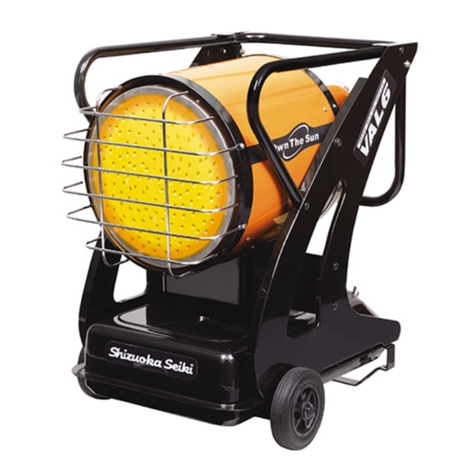
Shizuoka Seiki
Shizuoka Seiki VAL6 MPX owner's manual
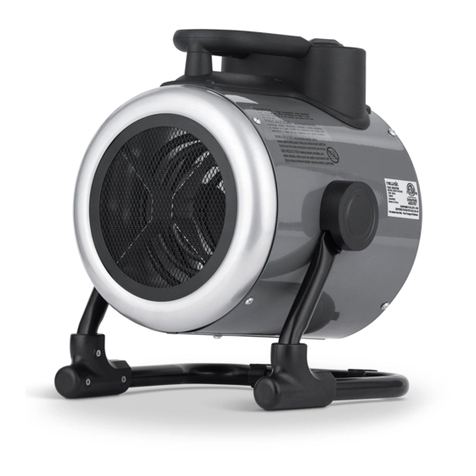
New Air
New Air NGH170GA00 owner's manual

Johnson & Starley
Johnson & Starley HI-SPEC M31 Installation, commissioning and servicing instructions
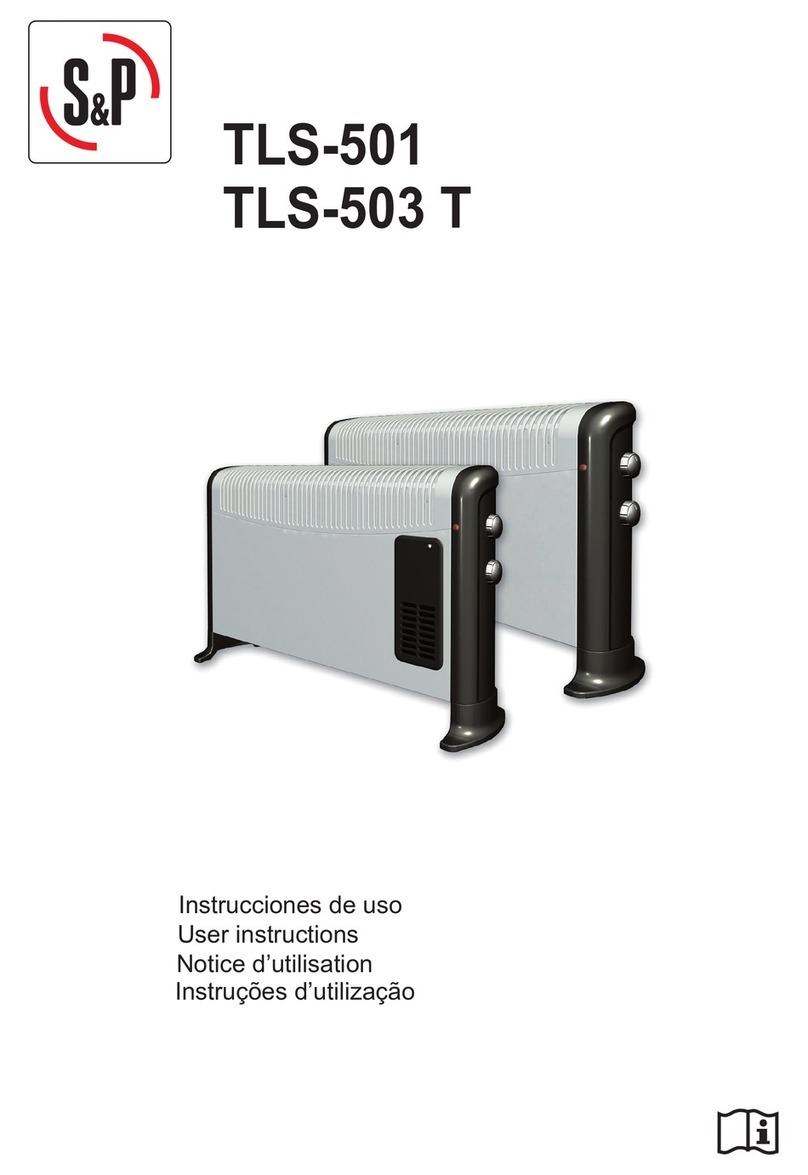
Soler & Palau
Soler & Palau TLS-501 User instructions
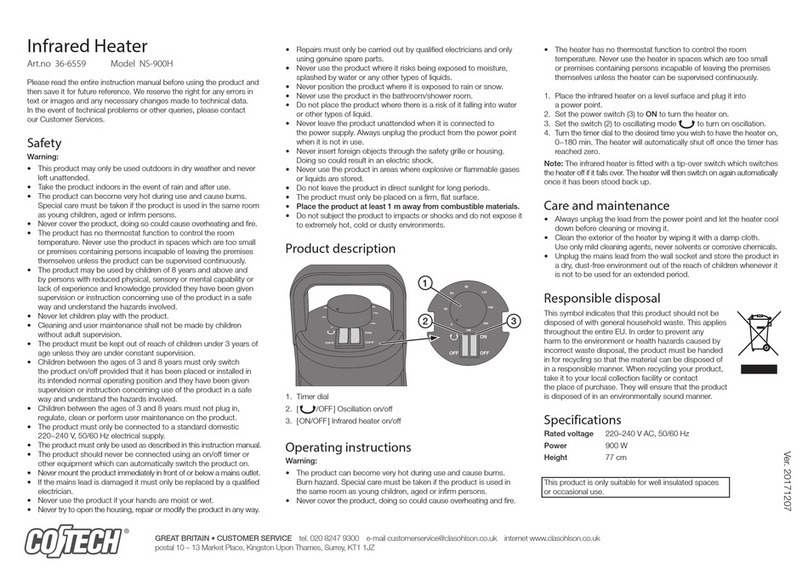
CO/Tech
CO/Tech NS-900H instruction manual
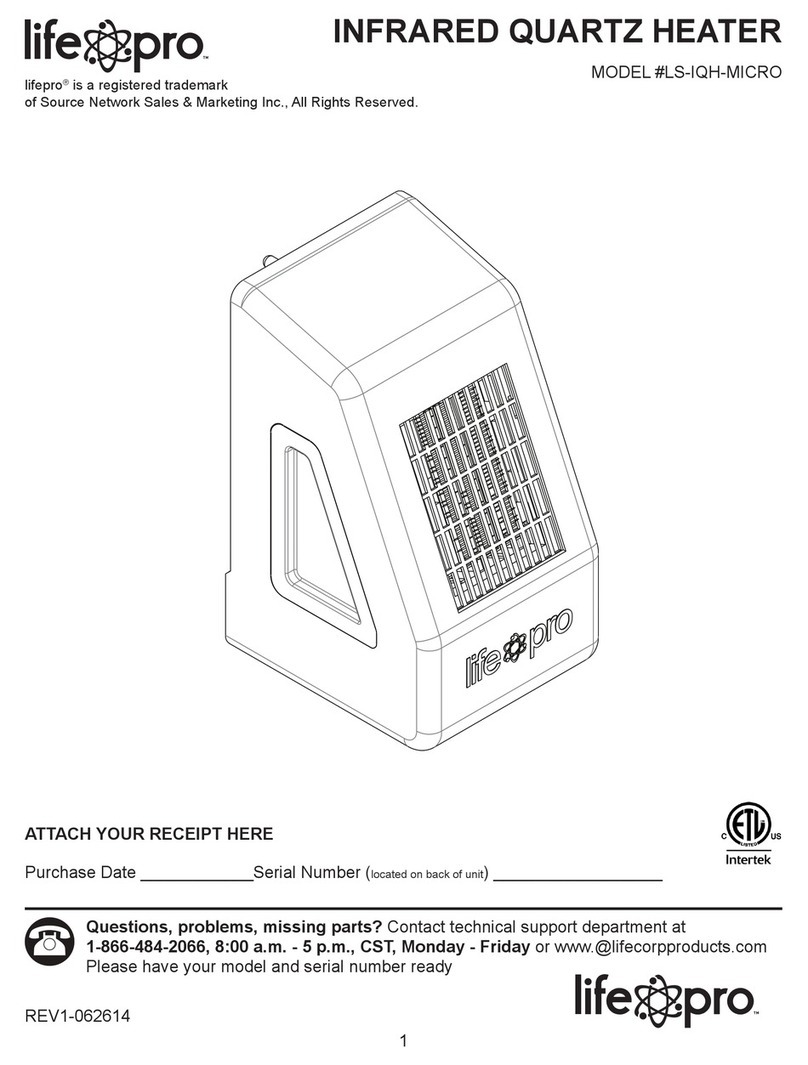
Lifepro
Lifepro LS-IQH-MICRO user manual
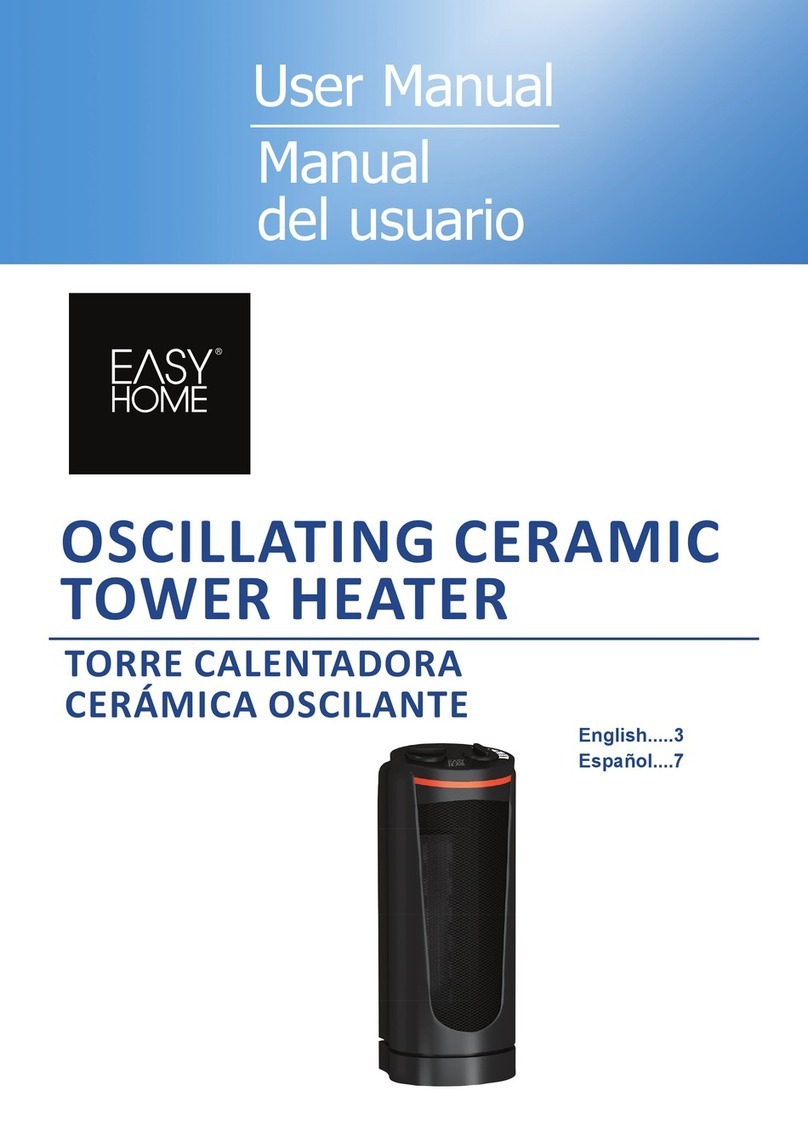
Easy@Home
Easy@Home SH-TH-22-TO user manual
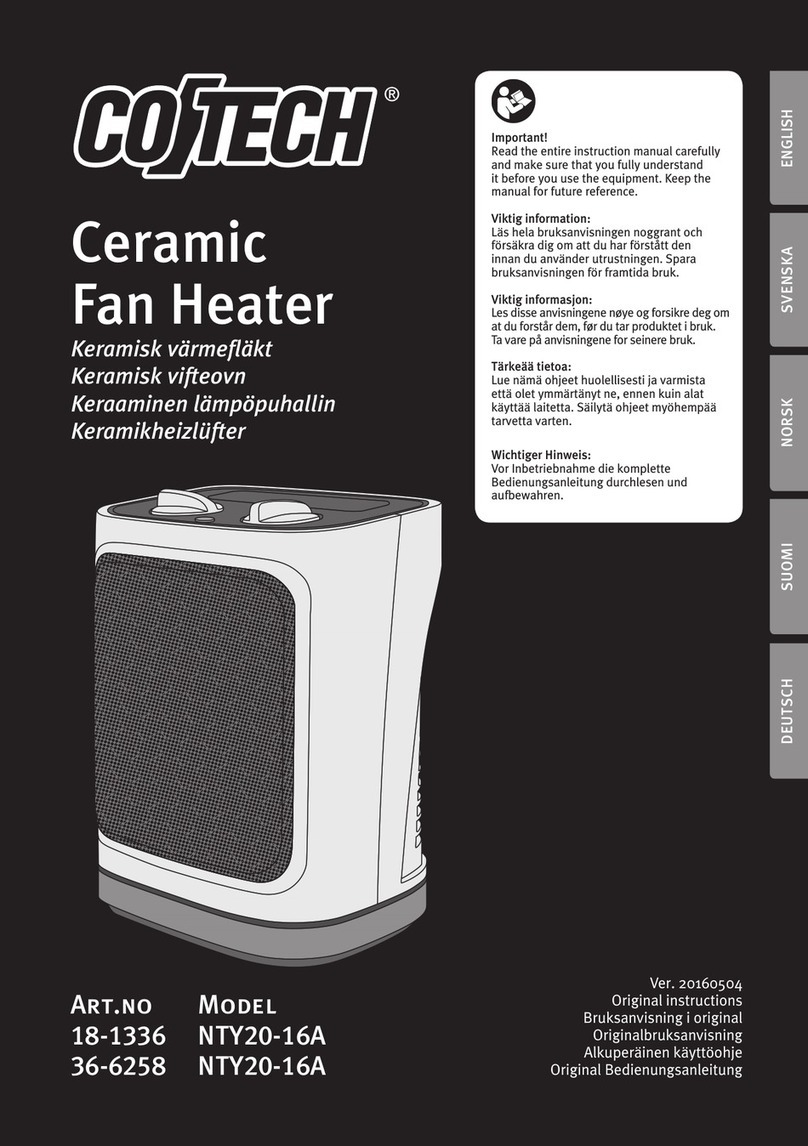
CO/Tech
CO/Tech NTY20-16A Original instructions
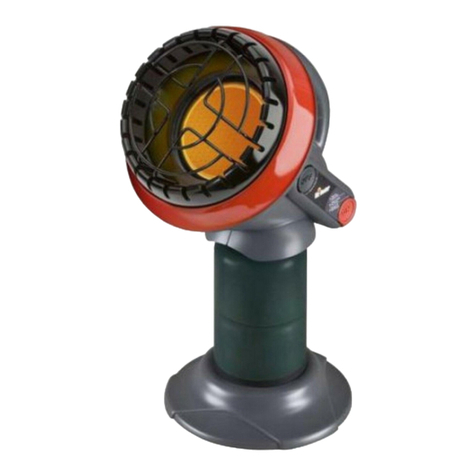
MrHeater
MrHeater MH4BDF Operating instructions and owner's manual
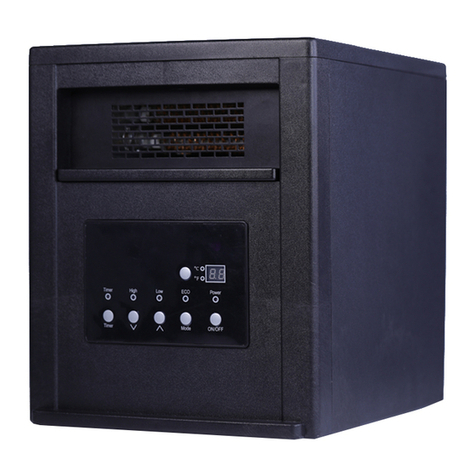
ProFusion
ProFusion GD9315BC1-N owner's manual
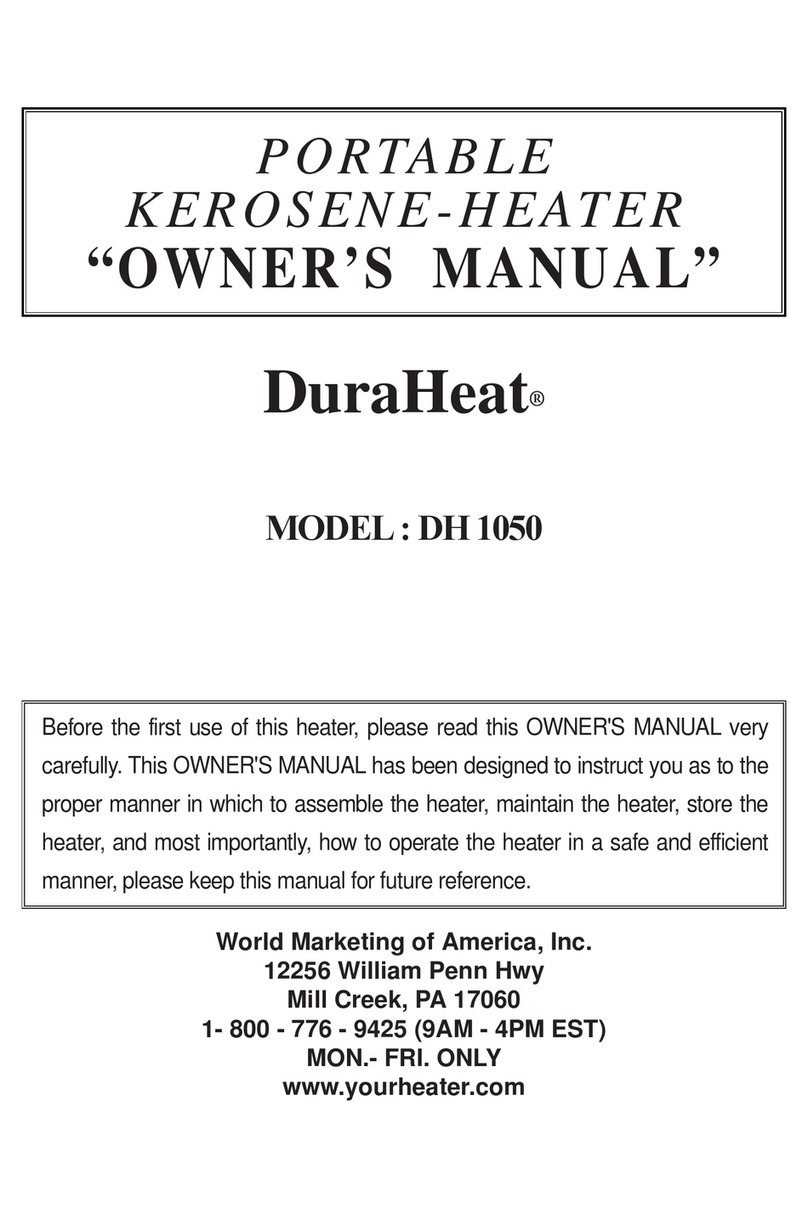
Dura Heat
Dura Heat DH 1050 owner's manual
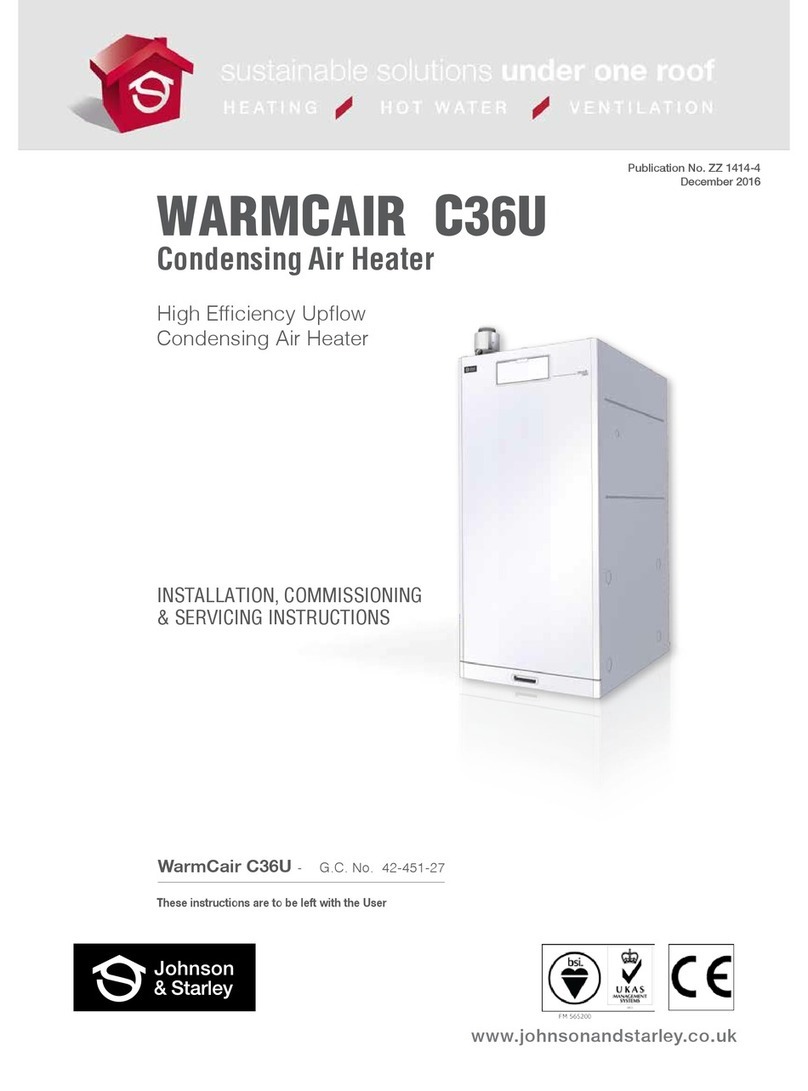
Johnson & Starley
Johnson & Starley WARMCAIR C36U Installation, commissioning & servicing instructions
